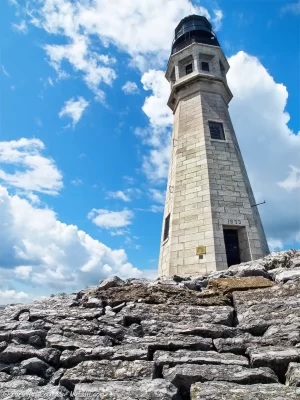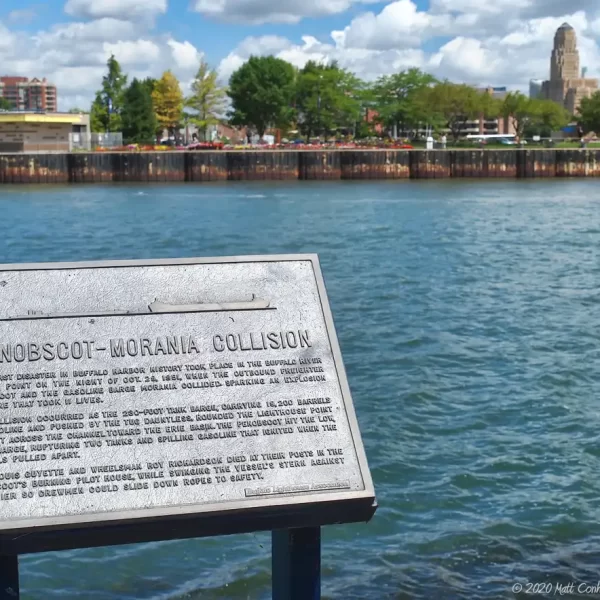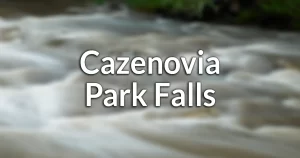Lighthouse Point Park
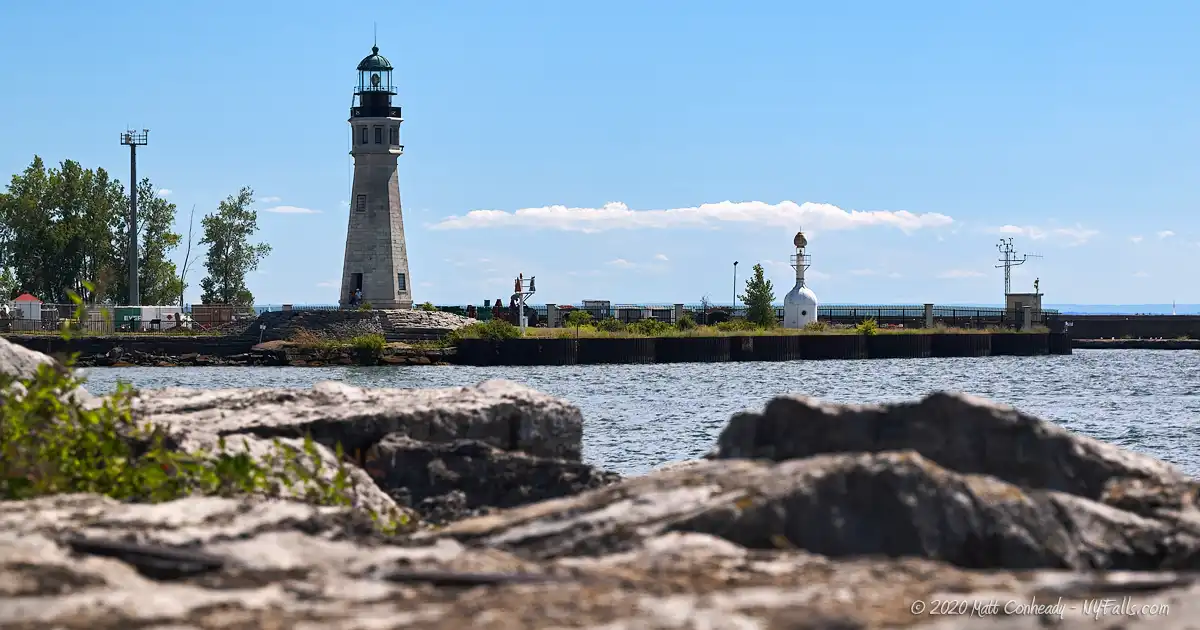
Location: On the northeast end of Lake Erie; within the Buffalo Outer Harbor; City of Buffalo; Erie County; New York.
Maps: Google map; Topgraphic; Interactive map
GPS Coordinates:
- Roadside Parking: N 42.87625 / W 78.88377
- Entrance: N 42.87673 W / 78.88433
- Buffalo Main Light: N 42.87782 / W 78.88951
Directions: From Buffalo (north): Take the Buffalo Skyway (NY-5) south to Outer Harbor Drive/Fuhrmann Blvd. Take Fuhrmann Blvd North about a half a mile. The entrance to the walkway is at the end of Fuhrmann.
From Erie/Dunkirk (south): You can follow NY-5 (Lakeshore Rd) north into Buffalo and right to the Outer Harbor.
Use Google Maps.
Parking: Roadside parking is available up and down Fuhrmann Blvd. If roadside lots are full, try Wilkeson Pointe Park. Do not block/enter the Coast Guard base entrance at the north end of Fuhrmann.
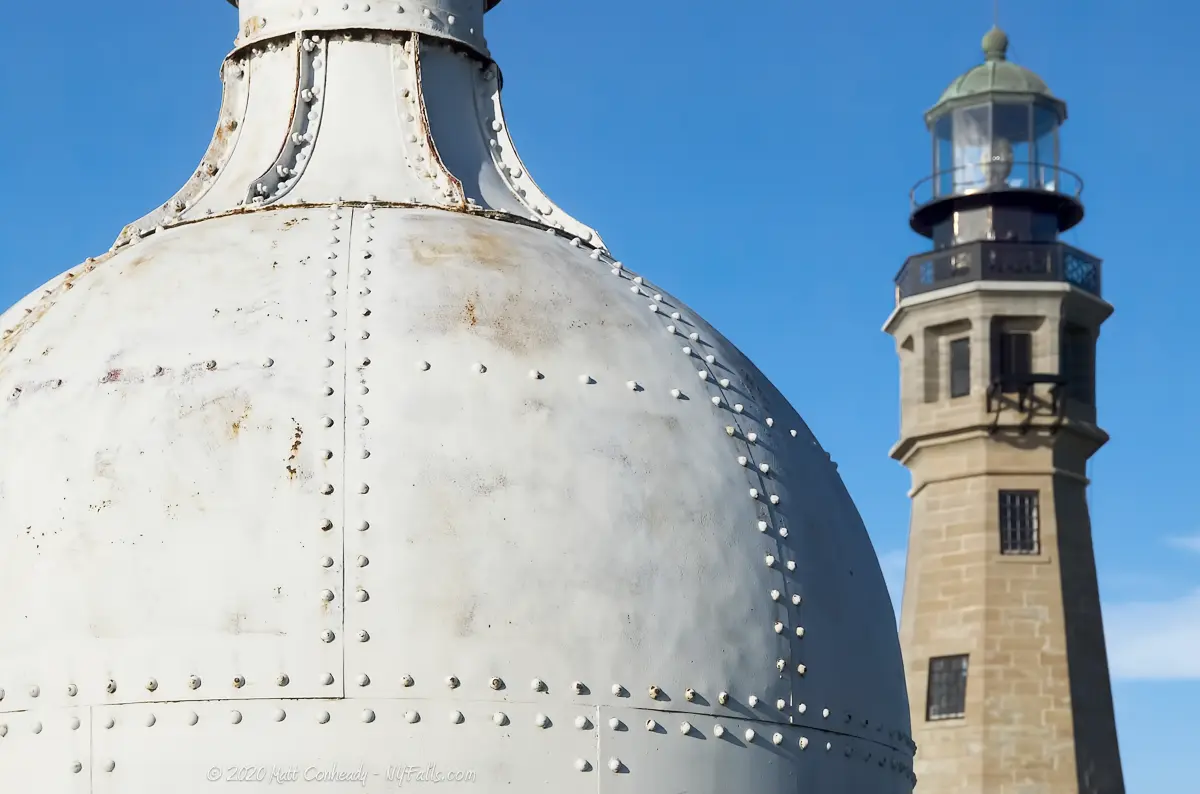
Weather
Information / Accessibility / Accommodations
Seasons/Hours: Open daily, from dawn until dusk.
Admission: Free.
Best time to visit: Spring through fall.
Time: A walk to the lighthouse, stopping to read all the signs and see all the artifacts, will take about 30 minutes. Combine this with Times Beach Nature Preserve, Wilkeson Pointe Park, and the Outer Harbor Greenway for an easy half day.
Handicap accessibility: Partial. The pathway from the road to near the base of the lighthouse is paved. Then there are steps preventing further access to the lighthouse and surrounding park.
Pets: Not allowed at all. Do not bring your dog into this property.
Swimming: Not allowed.
Boat launch: None. Use the boat launch at the Erie Basin Marina.
Accommodations: Informational and historic signs, scenic views, tours by appointment. Restrooms can be found to the south in Wilkeson Pointe Park.
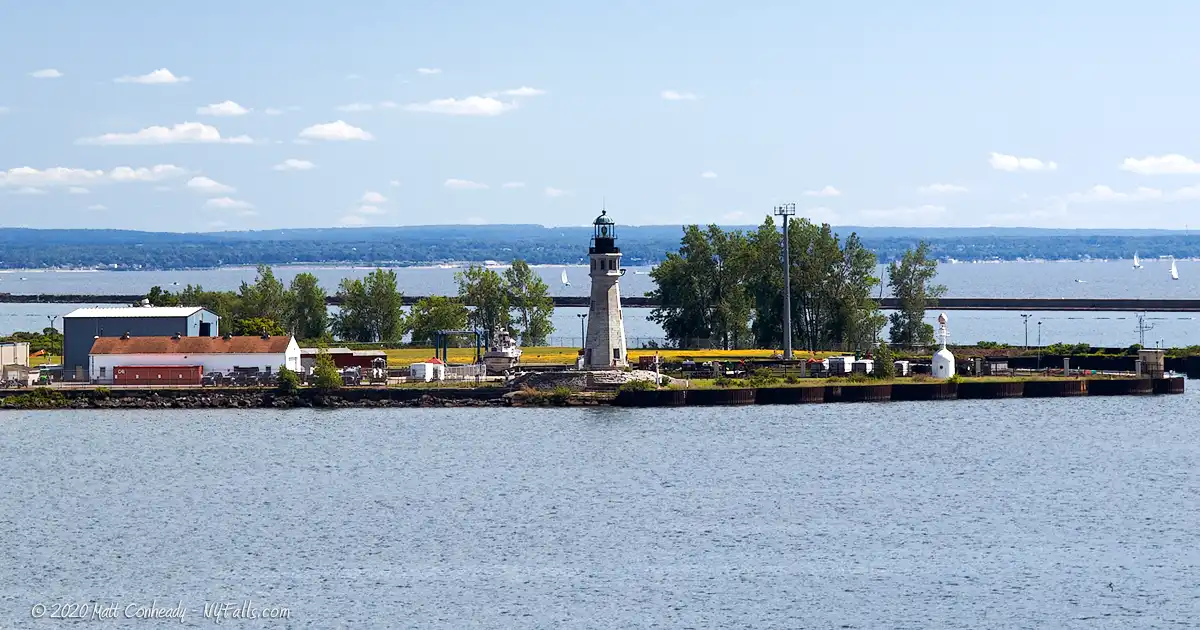
Description
One of the oldest structures on the Great Lakes, the 1833 Buffalo Light is a beautifully resilient monument to Buffalo’s maritime history. Built in 1833, the 61 foot octagonal limestone tower, capped with an 8-window gallery and steel and copper lantern, replaced the original 1818 light, and serviced the bustling north harbor for 81 years before it was decommissioned. Like most traditional lighthouses, it has since been replaced by modern beacons and navigational aids, but its role in Buffalo’s shipping history cannot be understated. Dark for 73 years and rehabilitated in 1962 and then again in 1985, it has stood as a symbol of Buffalo’s waterfront, now ripe for revitalization and tourism.
Lighthouse Point Park is carved out of the Buffalo U. S. Coast Guard station, on the south end of the Buffalo River outlet, at the end of Fuhrmann Blvd. This road, as well as much of the land at the point, began as a series of breakwaters and piers to protect the harbor. Sand and silt deposits piled up after storms and formed solid ground. Later on, landfill was used to extend the property of the Coast Guard base and create a harbor for its ships.
From the road, the park begins where the first lighthouse and keeper’s quarters were built in 1818. Now it’s just a grassy area with an open pavilion and a few historic markers. There are plans to build a visitor center here. The park then takes visitors along the stone pier, originally constructed by private citizens in 1919, and then rebuilt after a storm nearly destroyed it in 1844. Along the way, beautifully designed plaques describe the history of the pier, and boats zip back and forth along the mouth of the Buffalo River. Across the water is the Erie Basin Marina, which gets a lot more visitor traffic than this side does. The path here is narrow, as it runs along the Coast Guard base. Signs are posted to warn people not to trespass.
The path ends at the base of the light, on a jagged and difficult to walk on limestone foundation. The section of the point here is not very large at all, and backing up to get a good view, or photo, of the large tower proves to be difficult. The park surrounding the light has several historic and information markers as well as some artifacts strewn about the property, such as the 1903 Bottle Light from the south harbor in Lackawanna, an anchor, and fog bell. The tower itself is in excellent shape. Tours, which run typically on summer days, will take you up into the tower and into the gallery. It’s a tight fit and the steel stairs are steep, but well worth a look. From the top, you can see the Lackawanna wind farm to the south, and downtown Buffalo to the northeast. If the Light is closed to visitors, the far end of the point is a decent spot to check out more of the Erie Basin Marina pier, the harbor breakwaters, as well as the Buffalo Water Intake and Horseshoe Reef lights.
Visiting the light only takes a few minutes, and with Times Beach Nature Preserve and Wilkeson Point Park within walking distance, you can easily make a day of it. The Buffalo waterfront is changing from its former industrial past to a modern tourist destination, and the re-opening of the historic 1833 Light is easily one of the biggest, and most meaningful steps in its progression.
History
| March 3, 1805 | – | By act of Congress, the Village of Buffalo is made a “port of entry.” |
| April, 1811 | – | A New York State Law was passed to set aside land for a lighthouse in Buffalo, Niagara County. |
| June 18, 1812 | – | The War of 1812 breaks out and the construction of the lighthouse was put off. |
| December 30, 1813 | – | British forces attacked and burned Buffalo. |
| 1817 | – | Oliver Forward, collector of the port, is commissioned to buy the lighthouse site at the port of Buffalo. The land costs him $351.50. |
| 1818 | – | A 30ft stone tower is constructed near the present day pavilion at Lighthouse Point Park. John G. Skaats was the first keeper. |
| 1819 | – | NYS loans $12,000 to Buffalo for harbor improvements. Part of this improvement extended the pier out further into Lake Erie, past the lighthouse. The pier is constructed by private citizens. |
| 1820 | – | A private lighthouse is built on the new pier to help guide the Steamboat “Walk-on-the-Water.” |
| October 31, 1821 | – | The Walk-on-the-Water beaches less than 20ft from the 1818 lighthouse. No casualties. |
| 1825 | – | The Erie Canal opened in Buffalo. |
| 1826 | – | After complaints that air pollution from the village made the old lighthouse often useless, the Federal government appropriates $2,500 for the construction of a new lighthouse at the end of the pier. |
| 1827 | – | Samuel Wilkeson contracts to build the lighthouse, a new pier extending out from the lighthouse, and an ice-breaker. |
| 1832 | – | Buffalo is incorporated as a city, with a population of 10,000. Nearly half of them are immigrants. |
| 1832-1833 | – | The present Buffalo Light tower was built. It initially had reflectors and a green lens. The green lens was removed as it was deemed to better throw light with just the reflectors alone. |
| October 18, 1844 | – | A large storm, which lasts 3 days, destroys much of the Buffalo harbor and severely damages the lighthouse pier. Scores of people are killed. |
| 1845-1854 | – | Reconstruction of the Lighthouse pier. It is built bigger and with heavier stones. |
| 1850s | – | The original light is torn down. |
| 1854 | – | The Buffalo Light receives a new chandelier (which houses the flame), reducing the arc of light from 180 degrees to 100, but increasing its intensity. |
| 1856 | – | A fog bell and third-order Fresnel lens are installed in the light along with a new 2-story metal top and copper-tipped lightening rod. The light is now elevated to 76 feet above lake level in the 60-foot tower. A second light is built on Horseshoe Reef. |
| 1868 | – | 4,000 ft out from the Buffalo Light, a 2,500 ft breakwater is built with two lights. |
| 1872 | – | A large breakwater light station replaces the existing on of the south end of the breakwater. It has a fourth-order Fresnel lens. The Buffalo Main Light’s fog bell is moved to this station. |
| 1879 | – | The Great Lakes Life Saving Service establishes the Buffalo Life Saving Station on lighthouse land. |
| 1885 | – | The Light begins burning kerosene vapor instead of the lard oil (usually from whales) it has previously used. |
| 1899 | – | The keeper’s quarters (located where the 1818 light stood) is rebuilt. |
| 1903 | – | Two new lights are lit to aid in navigation of the south harbor. The oddly-shaped steel Bottle Light, and the South Buffalo Light station. A second Bottle Light was lit at the north harbor breakwater. (it was relocated to the 1833 Main Light sight in 1985) |
| April, 1905 | – | The 1833 light’s fixed lens is replaced with a 4 panel lens, allowing the light to flash, helping ships stand out against the backdrop of the city, now lit with electric lamps. The keeper had to wind the rotating clockwork mechanism every 6 hours. |
| c. 1906 – 1911 | – | A wooden pagoda-like tower is built 150 ft north of the Buffalo Light to serve as a lookout station. It is used to watch for illegal Chinese immigrants coming from Canada, as well as smugglers during prohibition. It was commonly referred to as the Chinaman’s Light. |
| 1914 | – | The four-panel rotating light is moved from the 1833 Light to the Breakwater Station and the 1833 light goes dark. A steel tower with red flashing electric light with fog bell is erected just south of the 1833 tower. |
| 1915 | – | The Life Saving Service merges with the Revenue Cutter Service to create the Coast Guard. |
| 1942 | – | An air horn replaces the fog bell on the steel tower on the south pier (near the 1833 tower). |
| 1950s | – | Coast Guard plans to demolish the 1833 tower and is met by resistance by the citizens of Buffalo with the “Save the Light” campaign. |
| July 26, 1958 | – | The freighter Frontenac leaves the Buffalo River and collides with the 1872 Breakwater Light Station, knocking it out of service. It becomes known as the “Leaning Lighthouse.” |
| 1961 | – | The Leaning Lighthouse is demolished. A beacon is installed on Buffalo’s furthest breakwater. |
| 1961-1962 | – | The 1833 Buffalo Light tower is restored.The last of the lighthouse keepers is relieved of duty as the 1903 South Buffalo Light station is automated. |
| 1979 | – | The 1833 Buffalo Light is listed on the National Register of Historic Places. |
| 1985 | – | The Buffalo Lighthouse Association is incorporated and begins major rehabilitation of the tower. One south harbor Bottle Light is moved to the grounds of the 1833 light. The other is moved to the Dunkirk Lighthouse grounds. The 1833 Light opens for tours. |
| 1987 | – | A replacement lens (from the South Buffalo Light) is fitted in the tower and it is lit in the traditional manner for the first time since 1914. |
| 2001 | – | Amid security concerns following September 11, access to the Buffalo Light is restricted. |
| 2010 | – | The Coast Guard announces it will hand over the lighthouse land (20 acres) to the city. The USCG station is reconfigured to allow for easier public access to the Light. |
| Summer 2013 | – | Through a cooperation between the city, the US Coast Guard, and the Buffalo Lighthouse Association, Lighthouse Point Park is opened, and tours of the lighthouse resume. |
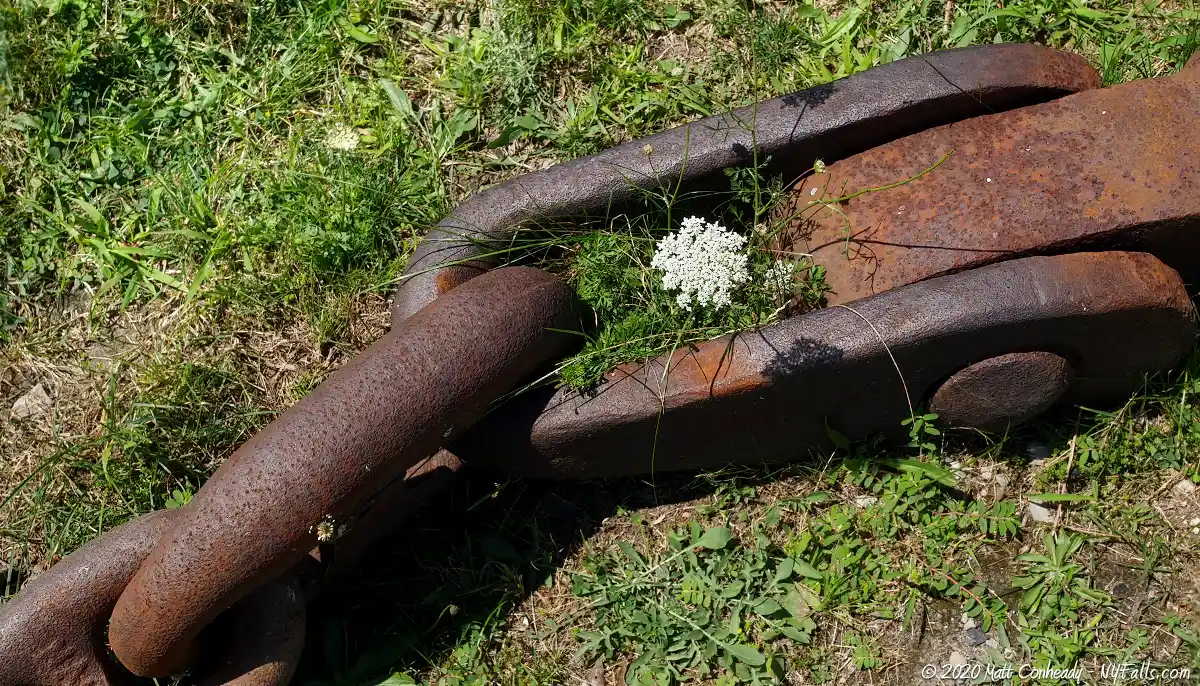
Hiking / Walking Trails
Difficulty: Easy. Although those who have difficulty keeping balance on uneven ground should avoid walking up the base of the lighthouse. The climb up the lighthouse steps is also a challenge for those afraid of heights.
Distance: The pathway to the lighthouse is about 2,000 ft.
Markings: Signs at the entrance and along the way. This paved path is clearly marked as is Coast Guard property.
Description: This walkway runs along US Coast Guard property, past the base and to a section of the point which has been set aside for public visitation of the Buffalo Light.
From the cul-de-sac at the end of Fuhrmann Blvd head up the paved walking path to the right of the Coast Guard base driveway. To the right is the former location of the first Buffalo lighthouse. This area is now part of the park. There are plans to put a visitor center here.
Continue along the path, reading the historic plaques along the way. The grassy area to the left is Coast Guard property. Do not trespass. Further along, the pathway will pass a few Coast Guard buildings and soon the Buffalo Light will be right in front of you. Climb the few steps to get to the foundation of the Buffalo Light. Feel free to wander about, read the plaques, and take photos. Do not cross over into USCG property or enter the water here.
Continue back the same way you came.
Map: Click here

Buffalo Light House Point Park Interactive Map
Fishing
Fishing is not allowed from this property.
Interesting Stuff
Penobscot-Morania Collision
What is considered the worst disaster in Buffalo Harbor history took place on the Buffalo River along this pier on the night of October 21, 1951. The outbound bulk freighter Penobscot collided with the gasoline barge Morania, and exploded, taking 11 lives.
The gasoline barge, containing 800,000 gallons, pulled by the tug boat Dauntless, was turning around lighthouse point and heading north to the Erie Basin. The low barge was dimly lit. The 4,000 ton Penobscot was leaving the River and T-boned the barge, running over it before it could stop. The ships trying to separate sparked the explosion.
USLSS Station #5, Ninth District Coast Guard Station #235
The Buffalo unit performs Search and Rescue, Maritime Law Enforcement, Ice Rescue, and Ports, Waterways, and Coastal Security missions.
It is responsible for commercial fishing regulation, container inspections, domestic vessel inspection, drug and alcohol testing, facility inspections, homeland security, foreign vessel boardings, investigations, waterways management (events and traffic), exams (licensing), and response to hazardous material release, oil spills, homeland security issues, maritime incidents, reports of drug and alcohol abuse on watercraft.
Photography Tips
Sunsets
- The eastern shore of Lake Erie is ideal for sunsets. Getting a shot of the Light in silhouette isn’t possible from this park, but you can get the shot from the Erie Basin Marina across the river.
Shoot wide
- The land surrounding the lighthouse is not large by any means. It’s going to be tough to get a shot of the lighthouse and any scenery behind it without shooting upwards (which tends to cause distortion). Bring an ultra-wide lens, and maybe a small stool to stand on to help fit it in and lessen wide angle distortion.
Skies
- Since you will most likely be shooting upwards at the light, it’s best to come here when there are dramatic clouds in the sky.
More tips
- See the Articles and Message Board sections for more photography tips.
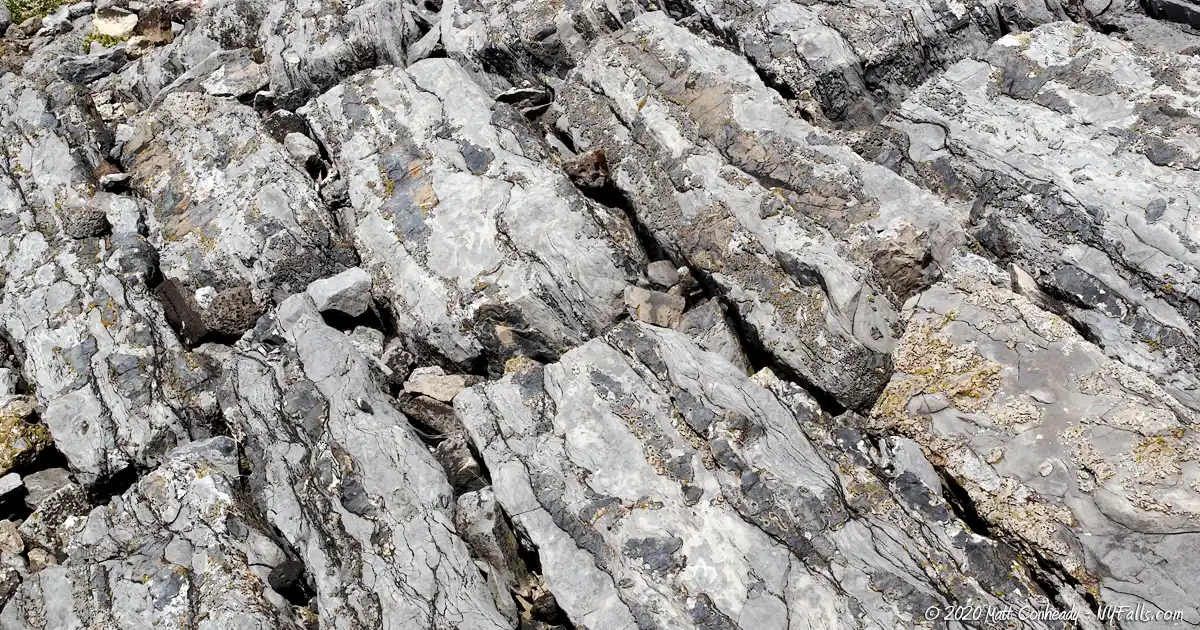
Nearby Waterfalls
More Lake Erie Parks & Beaches
Find a new summer hangout spot or place to swim in our comprehensive guide to Lake Erie Parks and Beaches in New York State.
Who to Contact
Buffalo Parks and Recreation
Phone: (716) 851-9670
For security safety concerns on the lake:
US Coast Guard Exchange
Phone: (716) 856-8143
Buffalo Lighthouse Association Lighthouse Keeper
[email protected]







